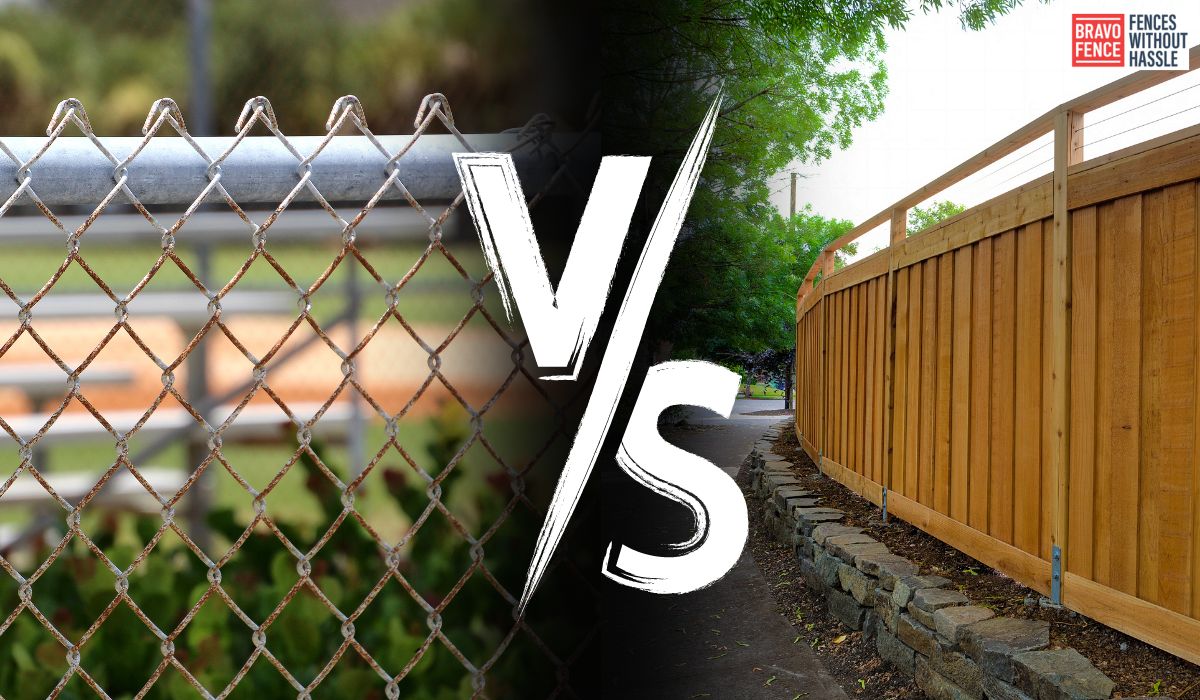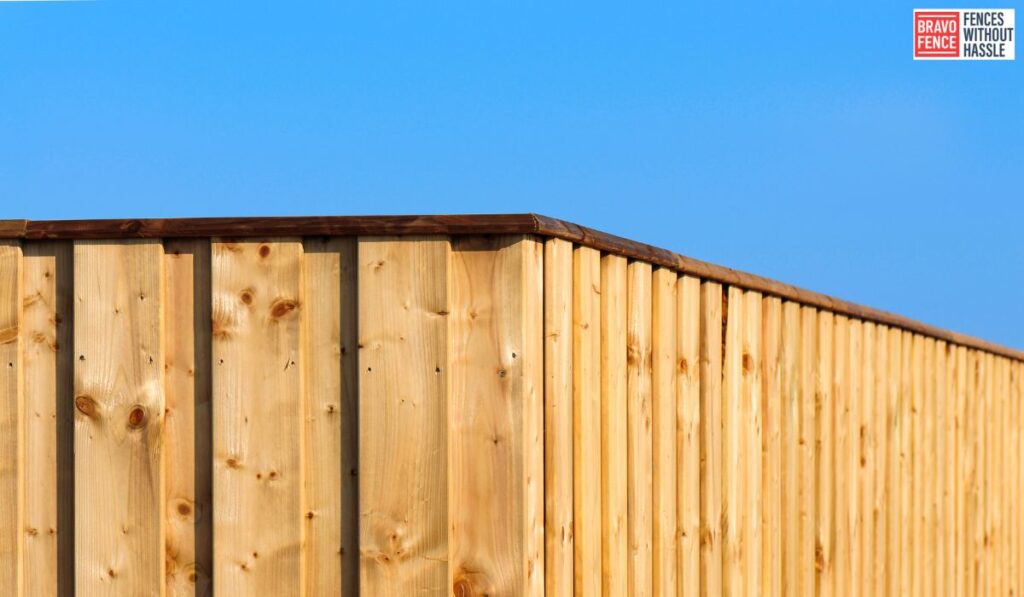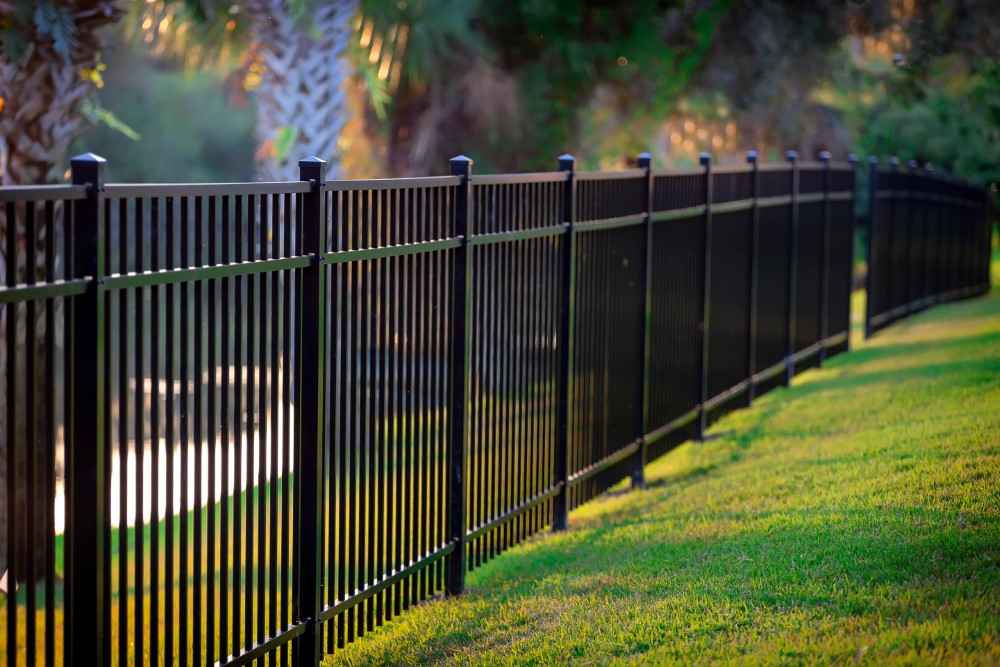
Chain Link Vs. Wood Fence Cost: Which One Is Budget-Friendly?
When choosing the right fence for your property, the cost is a crucial factor to consider. Two popular options often in this discussion are chain and wood fences. Each type has its advantages and disadvantages, but one of the critical considerations for many homeowners is the cost. In this article, we will compare the cost between chain links and wood fences, examining the initial investment, long-term expenses, replacement costs, aesthetics, and factors that affect the overall cost. So let’s get started and determine which fence type is more budget-friendly for you.
Understanding The Initial Investment: Chain Link Vs. Wood
Regarding the initial investment, chain link fences are more affordable than wood fences. Chain link fences are constructed of galvanized steel, a relatively inexpensive material. On the other hand, wood fences require higher material costs and additional labor for installation.
Examining The Cost Of Chain Link Fencing
The cost of chain link fencing primarily depends on factors such as the fence’s height, the wall’s length, the gauge of the wire, and any additional features or customization. On average, chain link fencing costs range from $5 to $20 per linear foot. So for a 200-foot chain link fence, you can expect to spend between $1,000 & $4,000.
Analyzing The Cost Of Wood Fencing
Wood fences offer a more traditional and aesthetically pleasing option. However, they come with a higher price tag than chain link fences. The cost of wood fencing is influenced by factors such as the type of wood, the height and design of the wall, and the overall length. Wood fencing costs range from $20 to $50 per linear foot. For a 200-foot wood fence, the total cost would be around $4,000 to $10,000.
Long-Term Expenses: Maintenance And Repairs For Each Fence Type
While the initial investment is essential, it’s crucial to consider the long-term expenses associated with maintaining and repairing your fence.
Calculating Maintenance Costs For Chain Link Fences

Chain link fences are familiar for their durability and low maintenance requirements. They do not require staining, painting, or sealing like wood fences. The main maintenance tasks for chain link fences include removing debris, inspecting for damages, and replacing individual sections if necessary. Overall, the maintenance costs for chain link fences are minimal.
Assessing Maintenance Costs For Wood Fences
Wood fences require more maintenance compared to chain link fences. They need regular staining or painting to protect the wood from rot, insects, and weather. Additionally, wood fences may require occasional repairs, such as replacing damaged boards or fixing loose posts. The maintenance costs for wood fences can add up over time.
Estimating Repair Costs For Chain Link Vs. Wood Fences
Regarding repairs, chain link fences are relatively easy and cost-effective to fix. Damaged sections can be easily replaced without much hassle. On the other hand, repairing wood fences can be more time-consuming and expensive, especially if the damage is extensive or affects the wall’s structural integrity.
The Cost Of Replacement For Chain Link Fence And Wooden Fence
Another aspect to consider is the fence’s lifespan and the replacement cost.
Evaluating the Lifespan of Chain Link Fences
Chain link fences are familiar for their durability & can last for several decennia with proper maintenance. The galvanized steel material is rust-resistant and can withstand harsh weather conditions. With occasional repairs and maintenance, a chain link fence can serve you well for a long time.
Evaluating the Lifespan of Wood Fences
Wood fences have a shorter lifespan compared to chain-link walls. The exact lifespan can vary depending on the type of wood, climate, and maintenance. A well-maintained wood fence can last around 20 to 30 years. However, it may require more frequent repairs and eventually need replacement.
Considering Replacement Costs for Chain Link vs. Wood Fences
Regarding replacement costs, chain link fences are generally more affordable. Since they are easier to repair and individual sections can be replaced, you can save money by not having to replace the entire fence. On the other hand, replacing a wood fence involves significant labor and material costs.
Aesthetics and Property Value: Impact on Cost
The aesthetic appeal of a fence and its impact on property value are essential considerations for many homeowners.
Exploring the Visual Appeal of Chain Link Fences
Chain link fences are known for their utilitarian appearance and are often chosen for their functional purpose rather than aesthetics. They are commonly used for commercial properties, industrial areas, or dog enclosures. However, various options, such as adding vinyl coating or slats, can enhance the visual appeal of chain link fences.
Exploring the Visual Appeal of Wood Fences
Many homeowners favor wood fences for their natural beauty and versatility. They can be customized to fit different architectural styles and provide privacy and security while adding a warm and inviting feel to a property. Wood fences tend to have a higher visual appeal compared to chain-link walls.
Understanding the Impact of Fencing Types on Property Value
A well-maintained and aesthetically pleasing fence can positively impact the value of your property. While chain link fences may not significantly increase property value, a high-quality wood fence can enhance your home’s curb appeal and desirability.
Factors That Affect The Cost Of These Fence Types
Many elements can influence the overall cost of chain links and wood fences.
Location-Specific Cost Considerations
The cost of materials & labor can vary depending on your location. Prices may be higher in certain regions due to supply and demand factors, local building codes, or transportation costs.
Size And Area Coverage – Cost Implications
The size and area you need to cover with the fence will directly affect the overall cost. Larger bars will require more materials and incur higher installation expenses.
Customization and Design – Effect on Fence Cost
Customizing your fence with decorative elements or intricate designs can increase the cost of chain links and wood fences. The more complex the invention, the more time and effort required for installation, resulting in higher prices.
Making An Informed Decision: Wood Fence Vs. Chain Link Fence Cost
When choosing between a chain link fence and a wood fence, you must consider your needs, preferences, and budget.
Both chain link and wood fences have their own set of advantages and drawbacks. Chain link fences are more budget-friendly, low-maintenance, and durable, while wood fences offer greater aesthetic appeal and customization options.
Consider elements such as the purpose of the fence, your location, desired level of privacy, and long-term maintenance requirements. By evaluating these factors in light of the cost comparison, you can make an informed decision that suits your needs and budget.
Choosing The Right Fence That Fits Your Budget
Ultimately, the decision between a chain link fence and a wood fence comes down to your budget and personal preferences. If you prioritize cost-effectiveness and durability, a chain link fence may be your best choice. On the other hand, if aesthetics and customization options are more important, a wood fence might be the better option, despite the higher initial investment and maintenance costs.
Consider your specific requirements, consult with professionals, and evaluate the long-term costs before making your final decision.
Conclusion
In conclusion, when comparing chain link fences and wood fences in terms of cost, it’s evident that they have a more budget-friendly initial investment and require lower long-term maintenance expenses. On the other hand, wood fences offer greater aesthetic appeal but come with a higher price tag and require more maintenance and repairs.
Understanding the cost implications of both fence types and the factors that affect the overall cost can help you make an informed decision that fits your budget and meets your needs. So weigh the pros and cons, consider your priorities, and choose the fence that suits your preferences and financial capabilities
FAQs
Is a chain link fence cheaper than wood?

Yes, chain link fences are generally cheaper than wood fences in terms of the initial investment. However, it’s also essential to consider long-term maintenance and repair costs.
How much does 200 ft of chain link fence cost?
A 200-foot chain link fence can range from $1,000 to $4,000, depending on height, wire gauge, and additional features.
Does a chain link fence decrease property value?
While chain link fences may not significantly increase property value, they serve functional purposes and can be a cost-effective option for specific properties.
What are the disadvantages of a chain link fence?
Some disadvantages of chain link fences include limited privacy, lower aesthetic appeal than wood fences, and potential rusting over time.
What is the most affordable type of fencing?
Chain link fences are generally considered the most affordable, offering a cost-effective solution for various applications.
What type of fence is the most expensive?
Certain high-end materials or intricate designs can make specific fences more expensive, such as ornamental iron or custom wood fences.
What is better than a chain link fence?
The choice of fence depends on individual preferences, needs, and budget. Wood fences, vinyl fences, or composite fences can be alternatives to chain link fences, offering different aesthetics and functionalities.
How many years does a chain link fence last?
Proper maintenance ensures a chain link fence can last for several decades, providing durability and long-lasting security.
What are the three advantages of building a chain link fence?
A chain link fence has three advantages: affordability, durability, and low maintenance requirements.
What time of year is fencing cheapest?
Fencing prices can vary depending on factors such as demand and material costs. Off-season periods when demand is lower may offer more competitive prices.
What type of fence lasts the longest?
Some long-lasting fence options include vinyl, aluminum, and masonry fences like brick or stone.
What is the most manageable fence to install?
Chain link fences are generally easier to install than other fences, as they involve fewer components and straightforward installation techniques.
Which lasts longer, chain link or wood fence?
Chain link fences tend to last longer than wood fences due to their durability and resistance to rot, insects, and weather conditions.
Is a chain link or wood fence better for dogs?
Chain link fences are often preferred for dog enclosures as they provide better visibility and containment, while wood fences offer more privacy but may have gaps where dogs can escape.
What is the best fencing for dogs?
Chain link fences with smaller mesh sizes or solid panel fences are popular for dog owners, offering better containment and visibility.
What is cheaper than a chain link fence?
Chain link fences are one of the most affordable fencing options. However, simple wire mesh or split rail fences are sometimes cheaper alternatives.
Is it better to drive chain link fence posts or concrete?
When installing a chain link fence, concrete is generally recommended to set the fence posts. Concrete provides stability and durability, ensuring the wall remains secure over time.
What is the best fence to keep?
The best fence to keep will depend on the specific purpose. A solid panel or chain link fence with smaller mesh sizes effectively contains pets. A wood or vinyl fence with concrete panels would be suitable if the goal is privacy. Assess your needs and choose the wall that aligns with your requirements.
What is cheaper than a wood fence?
If you’re looking for a fencing option cheaper than a wood fence, consider chain link or wire mesh fences. These alternatives tend to have a lower initial investment and require less maintenance.
Is there a wooden fence that will last ten years?
The lifespan of a wooden fence can vary depending on various factors, such as the type of wood used, climate conditions, and maintenance. While some wooden fences can last ten years or longer with proper care, it’s important to note that regular maintenance, such as staining and sealing, will be required to extend their lifespan.
How many years should a wood fence last?
A well-maintained wood fence can last around 20 to 30 years. However, the lifespan can vary based on wood quality, climate, and maintenance practices. Regular inspections and maintenance are crucial to prolonging the life of a wood fence.
Tags: chain link fence vs wood cost, Everything You Need to Know About Chain Link Vs Wood Fence, Everything You Need to Know About Cost Of Chain Link Fence Vs Wood Fence, Everything You Need to Know About Is A Chain Link Fence Cheaper Than Wood, Everything You Need to Know About Is Chain Link Fence Cheaper Than Wood, Explore Helpful Resources on Chain Link Fence Cost Vs Wood, Explore Helpful Resources on Chain Link Fence Vs Wood Fence Cost, Inspiration and Tips on Chain Link Fence Vs Wood, Inspiration and Tips on Chain Link Or Wood Fence, Inspiration and Tips on Chain Link Vs Wood Fence Cost 2023, Inspiration and Tips on Chainlink Vs Wood Fence Cost, Inspiration and Tips on Cost Of Chain Link Fence Vs Wood, Inspiration and Tips on Wood Fence Against Chain Link, Inspiration and Tips on Wood Fence Vs Chain Link Cost, Inspiration and Tips on Wood Vs Chain Link Fence, Inspiration and Tips on Wood Vs Chain Link Fence Cost, Top Ideas and Insights About Wood And Chainlink Fence
